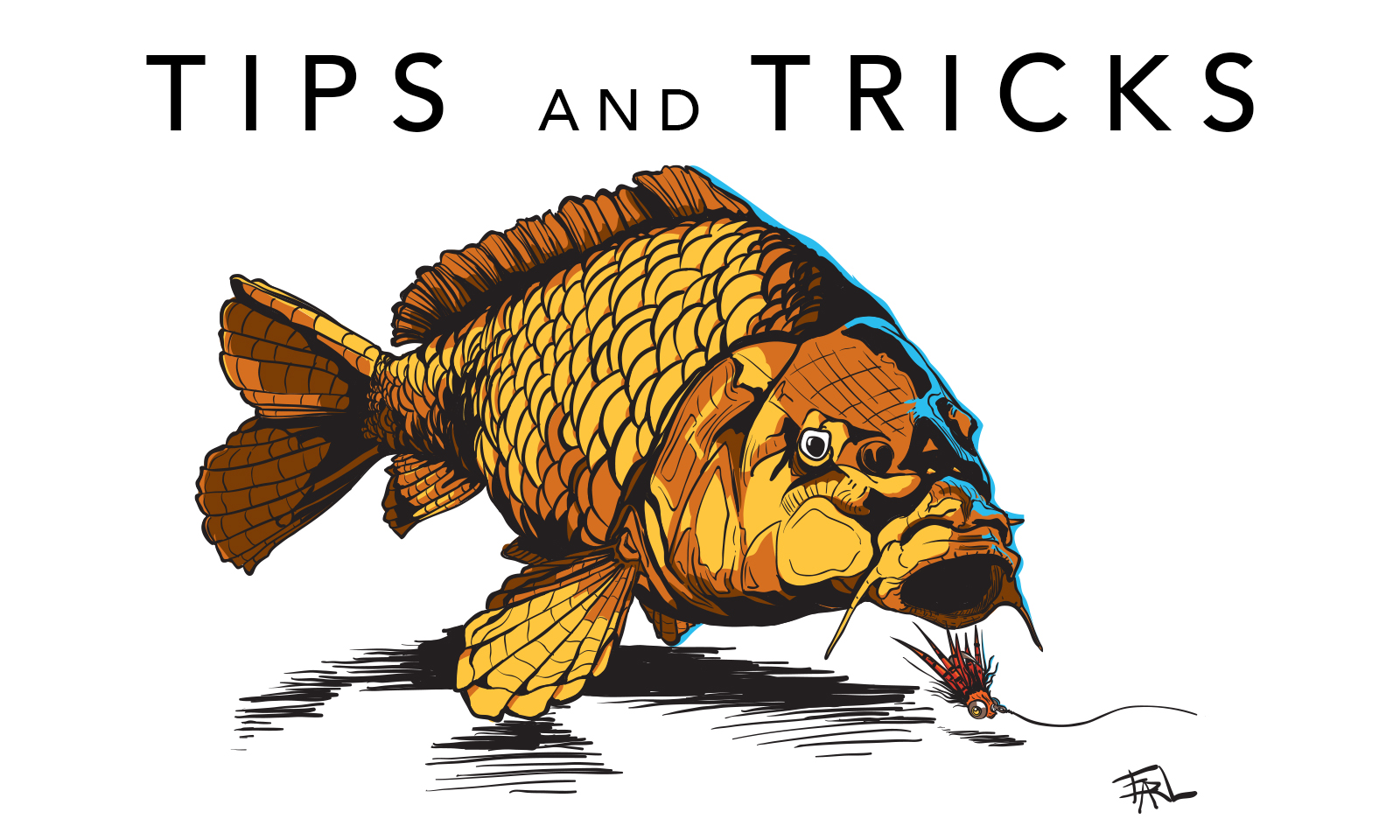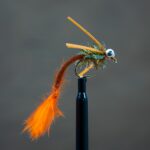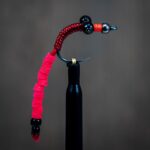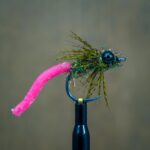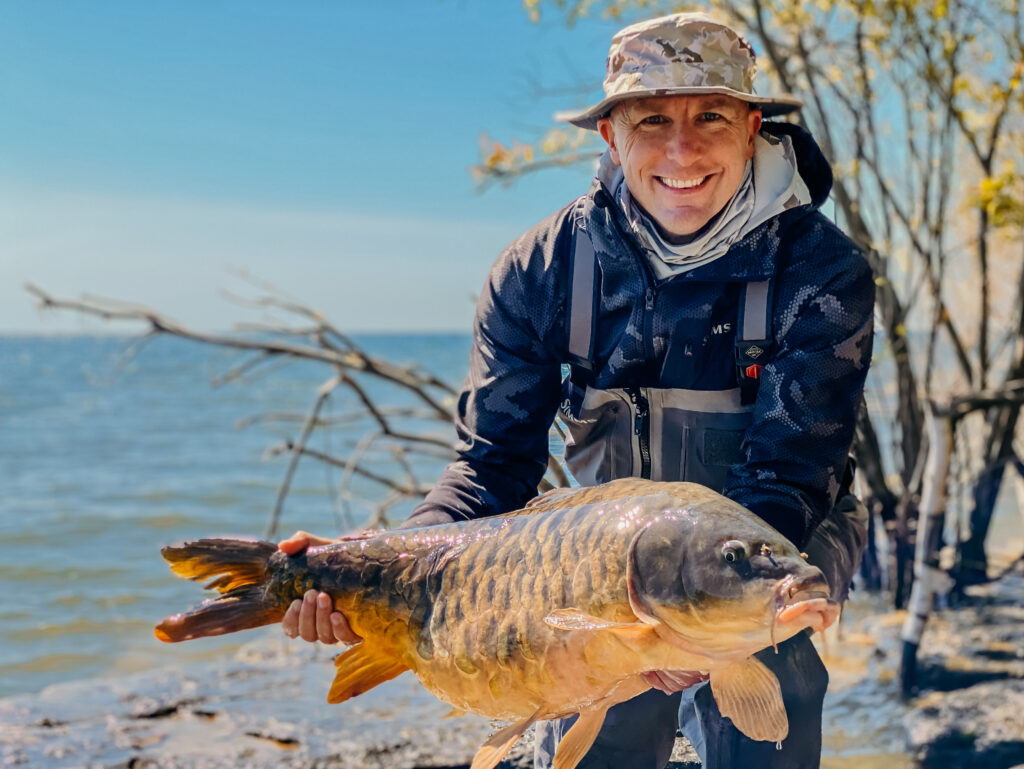I N T R O :
At some point this summer you might find the summer heat is making your local water a bit warm for the trout’s liking. At that point it might be a good time to retool a bit and start to chase carp on the fly. It probably won’t take much effort to change over and surprisingly there probably is a carp within a couple miles of whereever you are right now!!
Around the shop here we have fully embraced carp on the fly and have committed quite a bit of time chasing, tying for and traveling for our next trip. They aren’t easy but with a few tactics you can tie into a rather large freshwater fish that will pull harder than you might expect.
Once you have figured out the type of conditions carp like it isn’t very hard to find them. The difficult part of putting a carp in the net is knowing which carp to cast to. TTaking your time is crucial and will greatly increase your chance of success, as this is a sight fishing game. In this article there is a pile of good info from experts near and far to help you better undertstand a really fun fish to chase with a fly rod.
T I P :
A great standard for this fishing style is LOOK, WAIT and OBSERVE.
-
-
- LOOK – More often than not, carp will be basking and not in an active feeding behavior. Find and target actively feeding fish, as these will be much easier to catch and not alert other fish to be wary of your proximity.
- WAIT – once feeding fish are found, slow down and make sure you understand their behavior. Pay attention to direction of travel… are they eating on the bottom, mid column or on top? Is there a fish that is more active than others? Is there one that is larger than the others?
- OBSERVE – Details of behavior and the environmental conditions can impact overall success. Wind, sun conditions can play a pivotal role in allowing you to see fish and having them not see you. Slow down and take in the details of the surroundings.
-
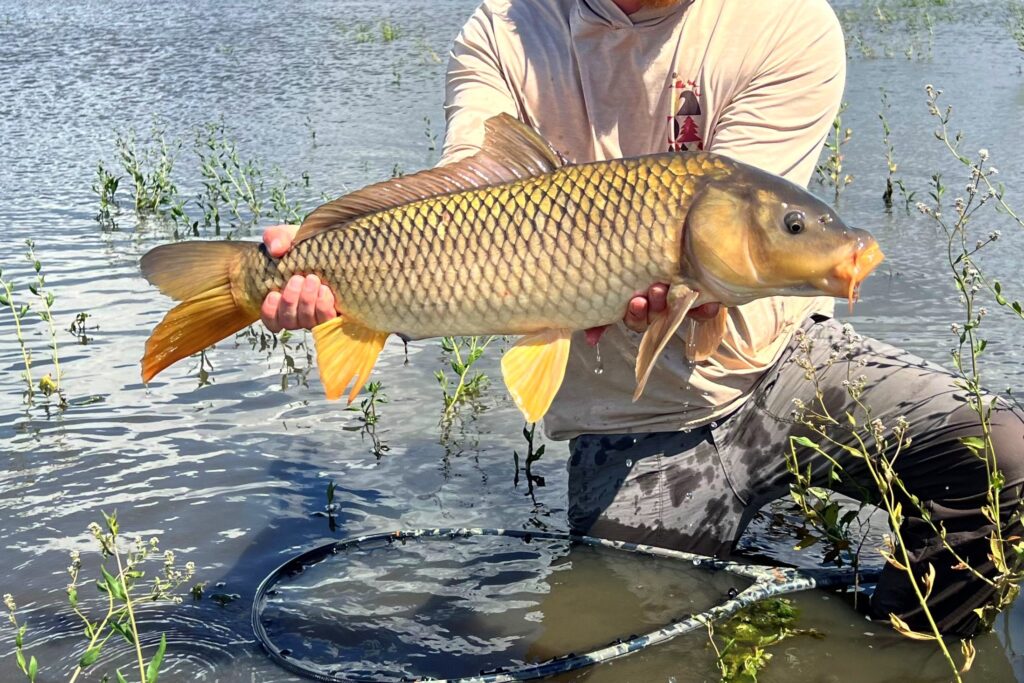 G E A R :
G E A R :
Carp are known to be a head strong fish to bring in, and landing one in the net can be as dramatic as landing a Pyramid Cutthroat.
We recommend a sturdy long handled net, and maybe even a fishing buddy to help land them.
A 6-8wt rod and 6/7/8 wt reel with a sturdy drag are needed. You will want a floating fly line.
Use a 7.5 ft 3X tapered leader as this is a great start as it can be lengthened if more delicate presentation is needed.
We recommend 3X tippet, in either Cortland’s Top Secret, or Scientific Anglers Absolute Fluorocarbon tippet.
A pair of polarized sunglasses can go a long way. Polarized lenses may give you an advantage in sight casting to these fish, as well as blocking out bright high sun.
Our exclusive Carp Dozen is a selection of 12 staff favorite carp flies.
- Carp Tickler
- Carp Tickler
- Carp Worm
- Squirmy Hybrid
P R E S E N T A T I O N :
Carp are intelligent fish, and have an air bladder that is connected to their lateral line. This makes them very adept at sensing vibration and movement in the water and sometimes even as far as the shore. Therefore when carp are feeding they have a singular focus, allowing us to make close accurate casts to present our fly.

The key is dropping you fly to where the carp is looking. Let’s imagine that a carp is wearing a baseball hat. With the hat on, there is a limit to the extent of their visual field when feeding. Your goal is to drop your fly inches in front of the carp within its visual field. Land your fly softly.
If your cast presentation is slightly off, you can skate or drag your fly slowly into place to make sure that it drops vertically into the fish’s visual field. Carp are less likely to take a fly that is already sitting in the mud even if you try to twitch it to entice it.
L O C A T I O N :
They don’t always only live singularly in ugly, dirty places. They are tolerant of most conditions, and are commonly found in slow moving or still water, with an abundance of vegitative sediment. The eastern portion of the Truckee River and certain eastern stillwaters can host a plethora of carp.
In the summertime carp have moved into slower moving water to feed and sunbathe. The best fishing conditions are about mid-day with high sun and clear skies. These conditions make them the most visible to anglers. A slow stealthy approach is key. Carp have very keen senses. Their vision, hearing and sense of vibration allow them to find forage and avoid threats.
Look out for the new episode of the Reno Fly Shop podcast, Episode #53 with John Bartlett… host Jim Litchfield and Bartlett discuss carp fishing on the fly and more. Episode premieres August 7th, and will be available through the website, or wherever you download podcasts.

